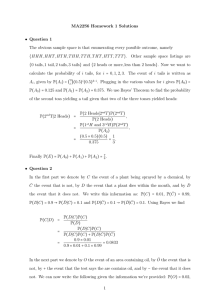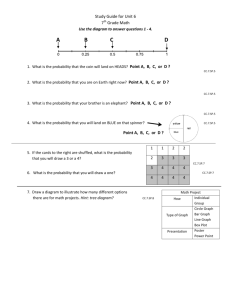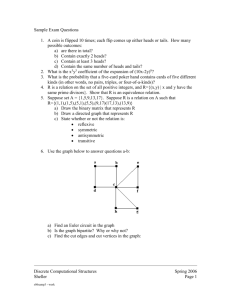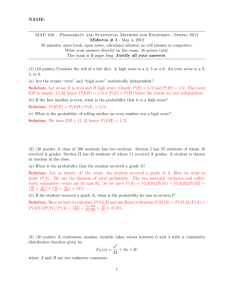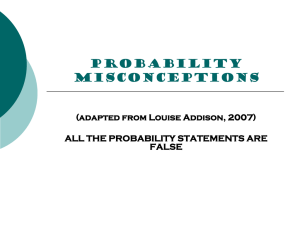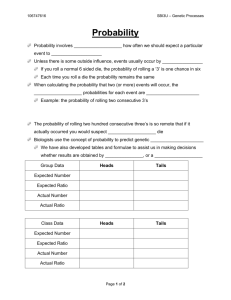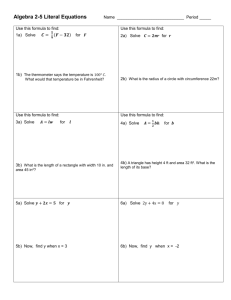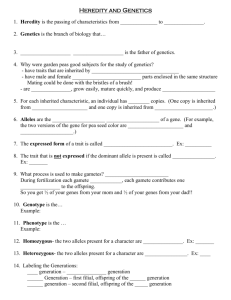File - The Division on Addiction
advertisement
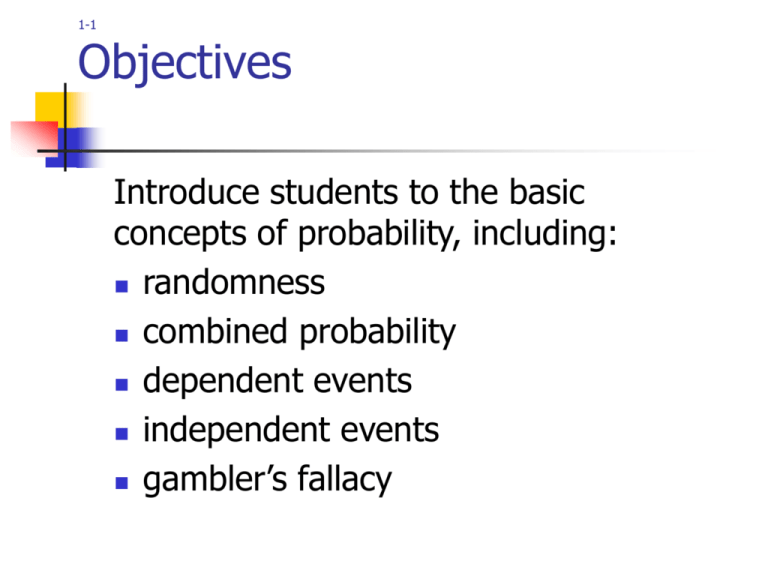
1-1 Objectives Introduce students to the basic concepts of probability, including: randomness combined probability dependent events independent events gambler’s fallacy 1-2 Defining Probability Probability is A. the likelihood that a given will occur B. A number expressing the likelihood that a specific event will occur, expressed as the ratio of the number actual occurrences to the number of possible occurrences (Soukhanov, 1992) event of 1-3 Probability of rolling a “1” (# of favorable results) (# of possible results) = 1/6 A "favorable result" is the result for which you are determining the probability. In this case, you are determining the probability of a single event 1/6 = .17 = 17% 1-4 Randomness Each possible outcome in that process has the same chance, or probability, of occurring Outcomes are determined by chance 1-5 Probability in the Real World Probability = # Favorable Outcomes Total # Trials Probabilities based on trials are an estimate 1-6 Combined Probability Probability of the 1st event AND 2nd event occurring Probability of 1st event X Probability of 2nd event Combined Probability 1-7 Is an Event Dependent or Independent? INDEPENDENT The outcome of the 1st event does not affect the outcome of the 2nd event DEPENDENT The outcome of the 1st event does affect the outcome of the 2nd event 1-8 Gambler’s Fallacy Mistaking independent events for dependent events In reality, the outcomes are completely independent 1-9 Probability of One Event vs. a Group of Events Assumption: Outcome is Random Probability of 1st x 2nd x 3rd x 4th = Combined Probability of a group of events 1-10 Shared Birthdays With any group of 23 people, there is a 50% chance that two or more people in that group will have the same birthday 1-11 Heads or Tails? In your group, flip the coin 20 times Each group will record the results count the number of heads and tails calculate the percentage of heads 1-12 Outcome and Probability What are all the possible outcomes for flipping two coins? heads/heads heads/tails tails/heads tails/tails What are the probabilities of each outcome? 1-13 Becoming a Legend Batting Average calculated # Hits during season Total # times at bat .400 batting avg. means a hit 4 out of 10 times at bat 1941: Ted Williams approached the last day of play with a .39955 (179/448) The Red Sox coach offered to let Williams sit out the last day to avoid slipping below .400 1-14 Becoming a Legend: Part II Given Ted Williams batting average before the last day (.39955), how many hits would you expect him to get out of 8 times at bat? If Williams went to bat 8 times on his final day and got the number of hits calculated above, what would his season average have been? Would you have played the last games or sat them out?
